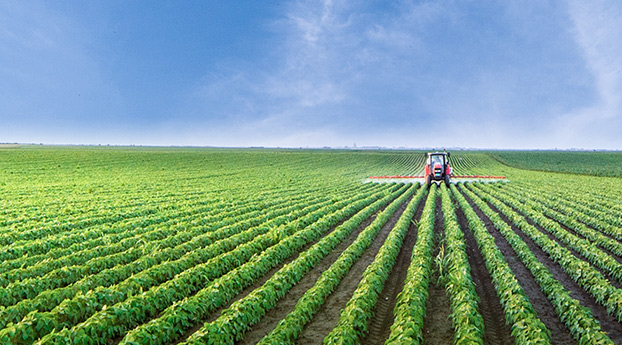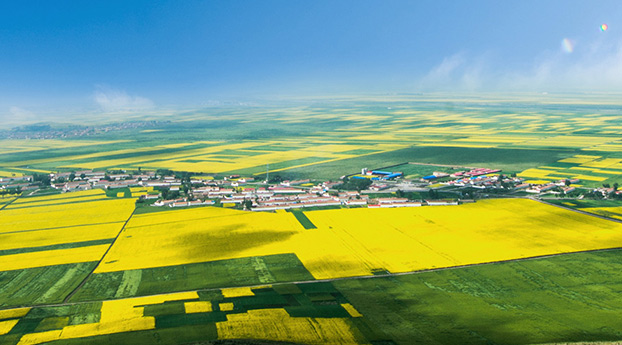Evolution of soil organic carbon and its synergistic effect on yield increase in Chinese farmland
Release time:2015-01-22 Views:76
【作者】 张旭博;
【导师】 徐明岗;
【作者基本信息】 中国农业科学院 , 土壤学, 2016, 博士
【摘要】 土壤有机碳(SOC)是农田生态系统的核心要素,也是农田生产力和土壤肥力的关键因子之一。SOC的许多转化过程和功能可直接或间接地决定土壤的质量和健康,并与作物高产和稳产紧密相关。然而,SOC的历史和未来演变特征仍未明确,其与农田生产力的关系仍未系统量化和研究。因此,本研究基于1980年左右建立的全国农田肥料网和1990年左右建立的土壤肥力网的长期试验为基础,选取跨越不同气候带、土壤类型和轮作制度的多个有代表性和良好管理的长期试验,分析我国典型农田土壤有机碳库的历史演变过程,并量化其增产效应。另外,本研究评价了SPACSYS模型在我国农田SOC演变模拟中的适用性。最后,分析了未来气候变化条件下下,我国农田土壤有机碳库及碳平衡的变化,以及SOC对作物产量的影响。主要结果和结论如下:1.相比不施肥,长期(20~30年)施用有机肥可以显著的提高土壤表层32~87\%的SOC库,秸秆还田相比不施肥也可以增加26~38\%的SOC库。整个试验期间,不同区域的SOC固定效率不同。总体来看,总碳投入的7.3~16.3\%(包括根系碳投入)可以转化为SOC。在北方地区,当施用有机肥或秸秆还田将土壤有机碳库提升至22~50 t C ha-1时,(东北地区为44~46 t C ha-1,西北地区为26~28 t C ha-1,华北地区为22 t C ha-1),其小麦和玉米的相对产量相比施用化肥处理只有13~22\%的提升。然而,在南方地区,施用有机肥或秸秆还田将土壤有机碳库提升至~35 t C ha-1后,其小麦和玉米的相对产量相比施用化肥处理显著提升。另外,SOC的提升对北方各地区小麦和玉米产量的稳定性有提高,但施用有机肥相比平衡施用化肥提高不明显。相反,在南方地区,SOC的提升对小麦和玉米产量的稳定性有很大提高。2.SPACSYS模型适用于模拟不同施肥措施下我国小麦和玉米的生长,及土壤有机碳和全氮的演变。尤其是施用化肥(氮、磷和钾)、有机肥和秸秆还田三种施肥模式。其中,小麦和玉米产量的模拟值和观测值的相关系数均达到0.8以上,且RMSE和EF分别为2.32\%~5.33\%和0.59~0.66;其次,土壤有机碳库和全氮含量的观测值与模拟值之间的相关系数达0.81以上,RMSE为3.12\%和2.61\%。另外,CO2和N2O排放的模拟结果均通过统计检验,表明该模型适用于我国农田土壤碳、氮循环过程的模拟。总之,SPACSYS模型适用于不同施肥措施下我国小麦和玉米产量、土壤有机碳和全氮的模拟。3.模拟结果显示:基于Baseline、RCP2.6、RCP4.5和RCP8.5四中气候情景,至2100年时,施用有机肥(NPKM和hNPKM)相比施用化肥在一年两熟轮作制度下可提高20~30\%的小麦产量;在一年一熟轮作制度下,施用有机肥相比施用化肥可提高10~20\%的小麦产量。在RCP气候情景下,施用有机肥(NPKM和hNPKM)相比施用化肥可提高10~25\%的玉米产量。另外,在整个模拟阶段,施用有机肥和秸秆还田相比不施肥在各气候情景下均显著提高了土壤有机碳库(提升速率0.237~0.360 t C ha-1 yr-1);相比施用化肥,施用有机肥可使土壤有机碳库显著提高(44\%~86\%),但秸秆还田只在一年两熟轮作制度下提高了土壤有机碳(31\%~33\%)。其三,直线-平台模型结果表明,通过施用有机肥或者秸秆还田的途径增加系统碳投入,可以增加小麦和玉米最大相对产量14\%~17\%和18\%~20\%。其三,未来气候变化条件下,一年两熟地区的土壤有机碳对产量的影响阈值并未有明显的改变,土壤有机碳的提升在达到一定程度(平均为25 t C ha-1)后不再对小麦和玉米的相对产量有明显增加作用。而在一年一熟地区,土壤有机碳库与小麦和玉米相对产量没有明显的相关性(R2=0.056,P>0.05)。所以说,土壤有机碳与作物产量的关系在不同轮作制度下对未来气候变化有着不同的响应。最后,施用有机肥后,每生产1kg小麦和玉米产量相应的碳和氮损失最小,相比不施肥和施用化肥分别降低了20\%~46\%和2\%~24\%。因此,有机肥的施用不但可以维持土壤肥力,而且可以减缓农业生产对气候变化的负面作用。但有机肥施用量以及与化肥同时施用时的合理配比仍需要进一步优化和研究。
【Abstract】 Soil organic carbon(SOC) is one of the most important indicators of agroecosystem, and plays important role in increasing crop productivity and improving soil fertility. The quanlity and health of soils can be controlled by processes of SOC cycling. However, the evolution of SOC and its impacts on crop yield has not yet been clearly quantified.Thus, 17 well managed long-term experiments with different climate, soil types and cropping stsyems in China were chosen to 1) quantify changes in SOC stock and the relationship between SOC stock and crop yield, 2) evaluate SPACSYS model on modelling storage of SOC and nitrogen, crop yield and processes of C and N cycling, and 3) predict the future changes in crop yield and SOC stock under different fertilization with different climate conditions, and analysis the effects of SOC on crop yield in the future under different climate conditions. The main results and conclusion were: 1) Annual application of inorganic fertilizers(NPK) plus animal manure over 20-30 years significantly increased SOC stock(20-cm depth) by 32-87\% whilst NPK plus wheat or maize straw application increased SOC stock by 26-38\% compared to the non-fertilized controls. In the northern regions, application of manure had relatively little effects on yield compared to NPK when topsoil SOC stocks were increased to 18- 50 Mg C ha-1. In the South, however, average yield from manure application treatments was 2.5 times greater than that from NPK treatment, and relative yields from manure application treatments were not increased until SOC stocks(20-cm depth) were more than 35 Mg C ha-1(1.39\% Dry matter). In the northern regions, yield stability was not increased by application of NPK plus manure compared to NPK, whereas in the South there was a significant improvement. We conclude that manure application and straw incorporation could potentially lead to SOC sequestration in topsoil in all typical agricultural regions of China, but beneficial effects of this increase in SOC stocks to 20-cm depth increase on crop yield and yield stability may only be achieved in the South. 2) The SPACSYS model can simulate the dynamics of SOC and SN and yields of winter wheat and summer maize from different fertilization treatments, especially for the treatments with application of chemical fertilizes plus manure, and straw incorporation. The simulated wheat and maize yields were significanltly correlated with observed value(R2>0.8). In addition, simulated values of SOC and total nitrogen were significant correlated with observed value(R2>0.81) and the RMSE were 3.12\% and 2.61\%, respectively. Furthermore, soil CO2 and N2 O emissions were well simulated indicating the SPACSYS can be used for modelling soil C and N cycling. However, some discrepancies between simulated and measured value can not be fully avoided like the other models. On the whole, SPACSYS model is suitable for modelling soil carbon and nitrogen in arable land in China. 3) Base on four climate scenarios(Baseline, RCP2.6, RCP4.5 and RCP8.5), predicted results indicated that application of manure(NPKM and hNPKM) can enhance wheat yield by 20-30\% under the rotation of double-cropping until 2100, and by 10-20\% under rotation of mono-cropping in individual climate scenario. Maize yield can be increased by 10-25\% in NPKM and hNPKM treatments under mono- and double-cropping systems. Furthermore, application of manure and straw incorporation significantly increased SOC stock with the increasing rate of 0.237-0.360 t C ha-1 yr-1 compared to unfertilized treatment under either mono-cropping or double-cropping. In addition, application of manure led the increment of 44-86\% of SOC stock compared to NPK treatment, but straw incorporation only increased SOC stock by 31-33\% compared to NPK treatment under double-cropping system. The results from linear-plateau model indicated that C input from manure and starw can increase the maximal wheat and maize relative yield by 14-17\% and 18-20\% compared with NPK. Under all climate scenarios, the threshold values of SOC on crop yield were not obviously changed(~23 t C ha-1 on average from 1989-2005). Further, SOC stock was not related to wheat and maize yield(R2=0.056,P>0.05) in the mono-cropping regions. After application of manure, C and N losses per 1 kg grain yield were the lowest among treatments, and were 20-46\% and 2-24\% lower than those in NPK treatments among regions. Thus, application of manure can sustain soil fertility and alleviate the negative effects of agricultural practices on climate change. However, application rate of manure and combine ratio of NPK and manure needs to be further optimized.
【关键词】 长期试验; 土壤有机碳; 相对产量; SPACSYS模型; 气候变化;
【Key words】 Long-term experiments; SOC; relative yield; SPACSYS model; climate change;

















